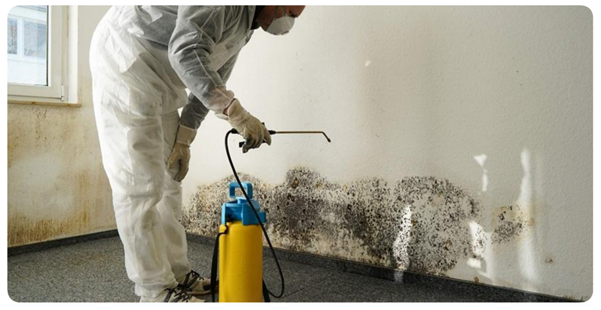Exploring Otology Instruments for Ear Health
Otology instruments are basic tools for ear health for Otolaryngology (ENT). It focuses on exploring the complexities of the ear and handling different ear-related issues. These instruments are essential for treating conditions from common ear infections to complex surgeries. This overview highlights key otology instruments, explaining their roles in preserving and restoring ear health. These instruments contribute to progress in diagnosing, treating, and managing different ear disorders. This journey through otology instruments tells the importance of each tool in enhancing medical practitioners’ abilities and ultimately improving patient outcomes.
What are Otology Instruments?
Otology instruments are special tools used in the medical field of otology, which focuses on studying and treating disorders related to the ear. These instruments are designed to assist healthcare professionals, otologists, and ear surgeons in diagnosing and treat different ear conditions. Otology instruments have a wide range of tools, including otoscopes for examining the ear canal and tympanic membrane and microscopes for detailed visualization during surgery. Various surgical instruments for ear tube placement, tympanoplasty, and stapedectomy. Precision and fineness are required in otology procedures, and these instruments are specifically manufactured with accuracy and safety in addressing ear-related issues.
What is the Role of Otology Instruments in Ear Treatments?
The field of otology has seen advancements in instrument technology, leading to the development of refined equipment that improves diagnostic capabilities and surgical precision. Modern otology instruments incorporate fibre-optic illumination, high-definition imaging, and ergonomic designs to improve functionality and user experience. With the help of these instruments, healthcare professionals can better assess and address conditions affecting the ear, ranging from routine examinations to complex surgical interventions. Otology instruments to maintain and restore the delicate structures of the ear contribute to improved patient outcomes and quality of life with ear-related health concerns.
Some Common Otology Instruments and Tools
Introducing various tools that empower and increase productivity. These tools help ENT surgeons achieve better ear treatments. Here are some common tools that are used in otology.
Ear Tweezers
Ear tweezers, recognized as ear forceps or ear-pulling tweezers, are tools created for intricate tasks within the ear canal. Engineered with a slender and elongated design, these tweezers allow the careful extraction of minute foreign objects or excess earwax. Their pointed tips facilitate precision, ensuring gentle manoeuvring in the delicate ear region. Usually featuring a non-slip grip for enhanced control, these specialized tools provide healthcare professionals and individuals with a safe means to address ear-related concerns. Their purpose lies in maintaining ear hygiene and preventing discomfort by allowing targeted and careful removal of blocks within the ear.
Ear Forceps
Ear forceps are surgical tools designed for delicate procedures within the ear canal. Marked by slender, elongated tips, these forceps enable precise extraction of foreign objects or excess earwax. Created from high-quality materials such as stainless steel, they provide durability and resistance to corrosion. With a non-slip grip, these forceps grant surgeons or healthcare professionals enhanced control during intricate otologic interventions. Their design allows for careful handling, contributing to maintaining ear health and alleviating conditions affecting the ear. Ear forceps ensure safety in various otological surgical procedures.
Otoscope
A tool for ear examinations is the otoscope, a handheld device like a flashlight with a magnifying lens and disposable tip. It helps otologists see inside the ear canal and eardrum. This tool is essential for spotting issues like ear infections, blocked earwax, or foreign objects in the ear.
Tympanometry
Positioned posterior to the eardrum, the middle ear plays an important role in auditory function. Tympanometry, an instrumental diagnostic procedure, is an assessment tool for middle ear functionality. The tympanometry instrument operates like a backstage pass, gauging the eardrum’s response to variations in air pressure. Beyond technical terminology, its significance lies in diagnosing conditions such as middle ear infections and Eustachian tube dysfunction precisely. This fine examination highlights the instrument’s clinical utility in discerning auditory pathologies, contributing to a thorough understanding of the intricacies within the middle ear.
Microsurgical Instruments
Ear microsurgery requires exact accuracy, and ENT surgeons rely on specialized instruments like micro scissors and micro forceps. These tiny tools enable delicate procedures within the ear, such as tumour removal or repairing damaged structures, which is essential for maintaining or restoring hearing. You should select high-quality microsurgical instruments for the demanding standards of ear surgery, ensuring surgeons have the precision tools needed for intricate procedures.
Ear Specula
For a comfortable and safe ear examination, otoscopes use ear specula, also known as ear cones, which come in different sizes to suit patients of all ages. These attachments are essential for a secure and comfortable diagnostic process while minimizing the risk of injury.
These precision-designed ear specula prioritize patient well-being, providing healthcare professionals with the tools for thorough and secure ear examinations across diverse age groups.
Myringotomy Knife
Surgical accuracy becomes compulsory in managing specific ear conditions, where myringotomy, a procedure involving small incisions in the eardrum, is required. Generally, this intervention alleviates pressure and fluid accumulation in the middle ear or facilitates drainage by inserting tiny tubes, a common strategy in managing chronic ear infections. The myringotomy knife, a specialized instrument for this purpose, is pivotal in ensuring accuracy during the procedure.
Choose high quality surgical tools for the best outcome.



